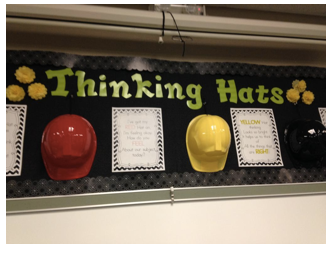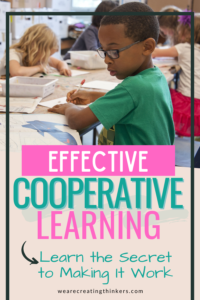At this point in the summer, I would typically find myself thinking about and working on the look of my room. I might create new table signs, change my classroom theme, go out and buy cute lanterns… whatever it takes to create a cute environment in my classroom!
But this year is different.
I don’t know if it’s because it’s now my 6th year teaching and I’m tired of redecorating every year, if it’s because I have a new baby at home and don’t want to leave him to redo my room, if it’s because I’m finally staying in the same grade level and the same room this year, or it it’s simply because I want to focus on what really matters.
Aside from replacing a few borders and moving furniture back since we had carpet replaced, I’m going to focus my time on making sure I set my students up to be critical thinkers from the start.
As teachers, we know that we need to dedicate the first few weeks of school to routines, procedures, and setting up our expectations for the year. If I want my students to be deep thinkers, then shouldn’t I start this from the beginning of the year?
Well, here’s what I’m doing to make sure my students know I want them to be critical thinkers:
Back to School Activities that Build Community and Depth of Thinking:
Last year I created my “Not Your Normal Back to School Unit” because it is just that… not typical. It has 7 different activities to help students get to know each other, but it elicits deeper thinking. My students loved it last year, and I plan to do it again! It’s a great place to start adding depth of thinking if you’re tired of the typical back to school activities.
Using Thinking Hats:
I have my bulletin board all set up and ready to go so we can use Thinking Hats from the start! I’ll probably start this the first week and introduce a hat or two each day. Here is the link to my post about my Thinking Hats bulletin board and chants.
Solving Multi-Step Word Problems in Math Workshop:
As I set up my math workshop, I want to make sure my students know that I expect them to really think when they solve word problems. I don’t want to give them problems that don’t require them to think. You know the typical “There were 7 frogs on the log. 3 jumped away. How many are left?” Without even closely reading, many students can tell that all they have to do is 7-4 to find the answer. Instead, I am using word problems that still require them to do simple addition and subtraction, but also require them to do multiple steps and decide which information they need to solve the problems. This is what I’ll be using to start that off:
Using an Interactive Writing Notebook:
I also want my students to know that we can be critical thinkers in writing, too. Anytime we read a book or have a neat experience, my students are looking for ideas to write about or phrases and words to try in their own writing. Since writing is something that many students in my experience do not enjoy, it’s important that I help them realize how creative they can be by introducing them to wonderful authors and fabulous words. In order to keep track of all of this, we use our writing notebooks. By the end of the year, I hope my students each have their “WOW Words” page full of exciting new words!
I hope this helps you to think about the kind of thinking you’ll expect from your students right away. I can’t wait to meet all of my new thinkers!
Let Me Help You Turn Your Students into Thinkers!
If you have a passion for getting your kids to think, you’ll love my FREE Guide. It’s about 4 simple strategies to bump up the thinking in any lesson. Download it for free and stay in touch to get classroom-tested ideas straight to your inbox!













